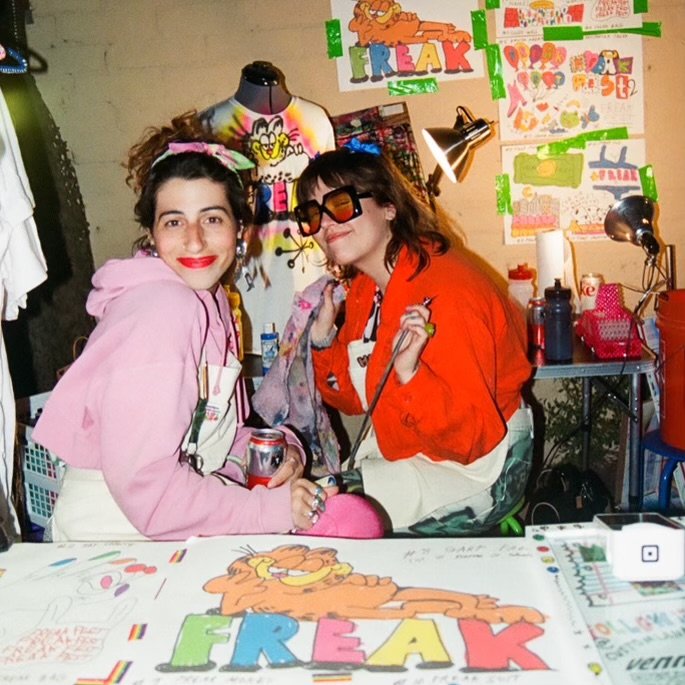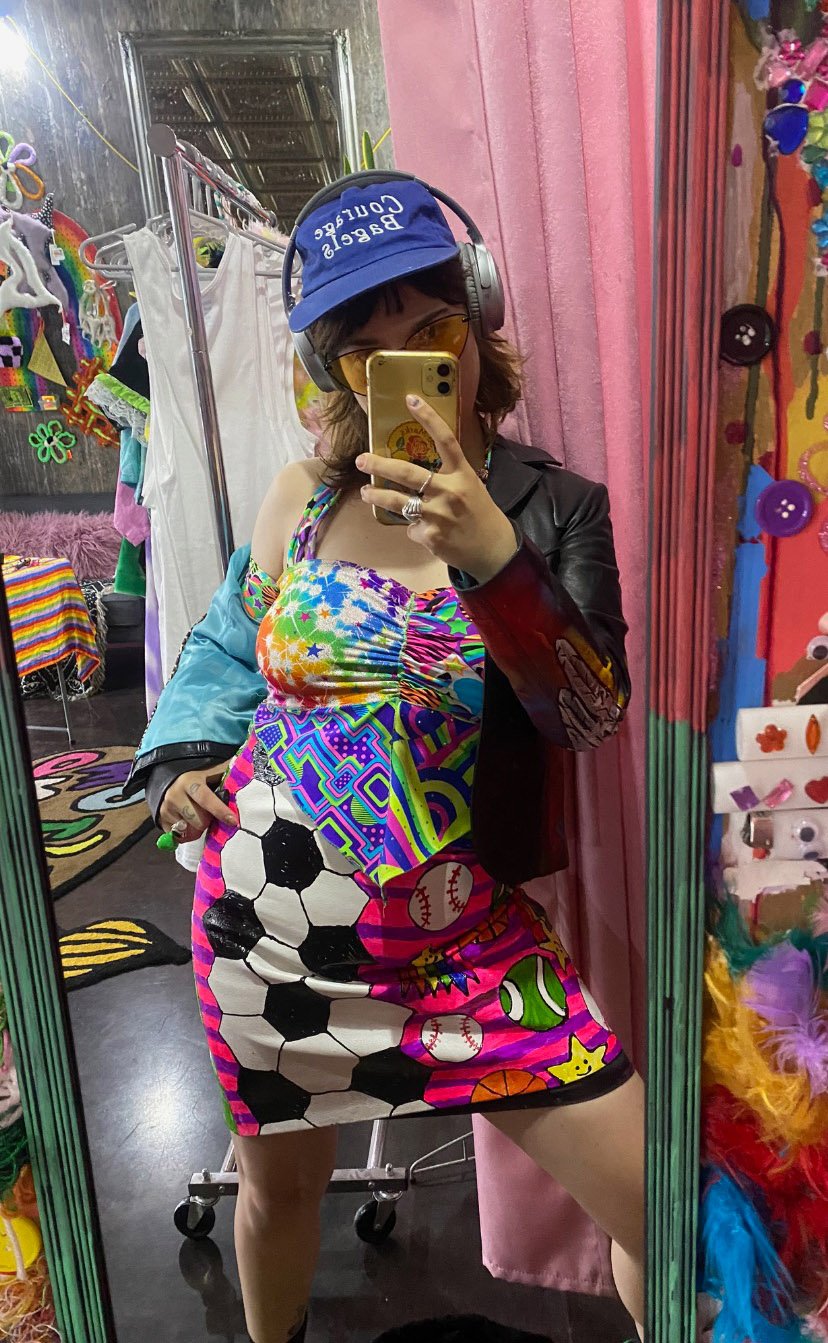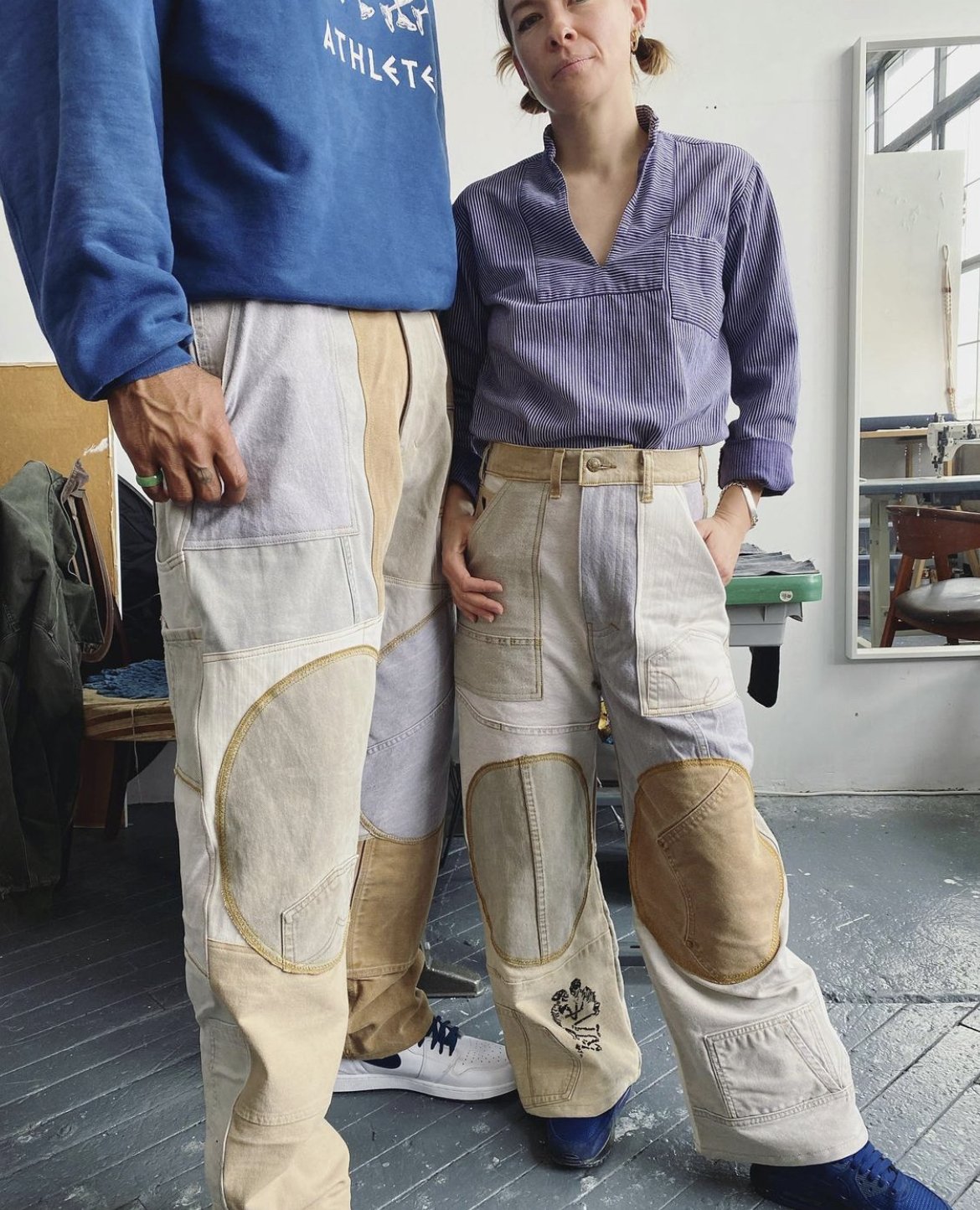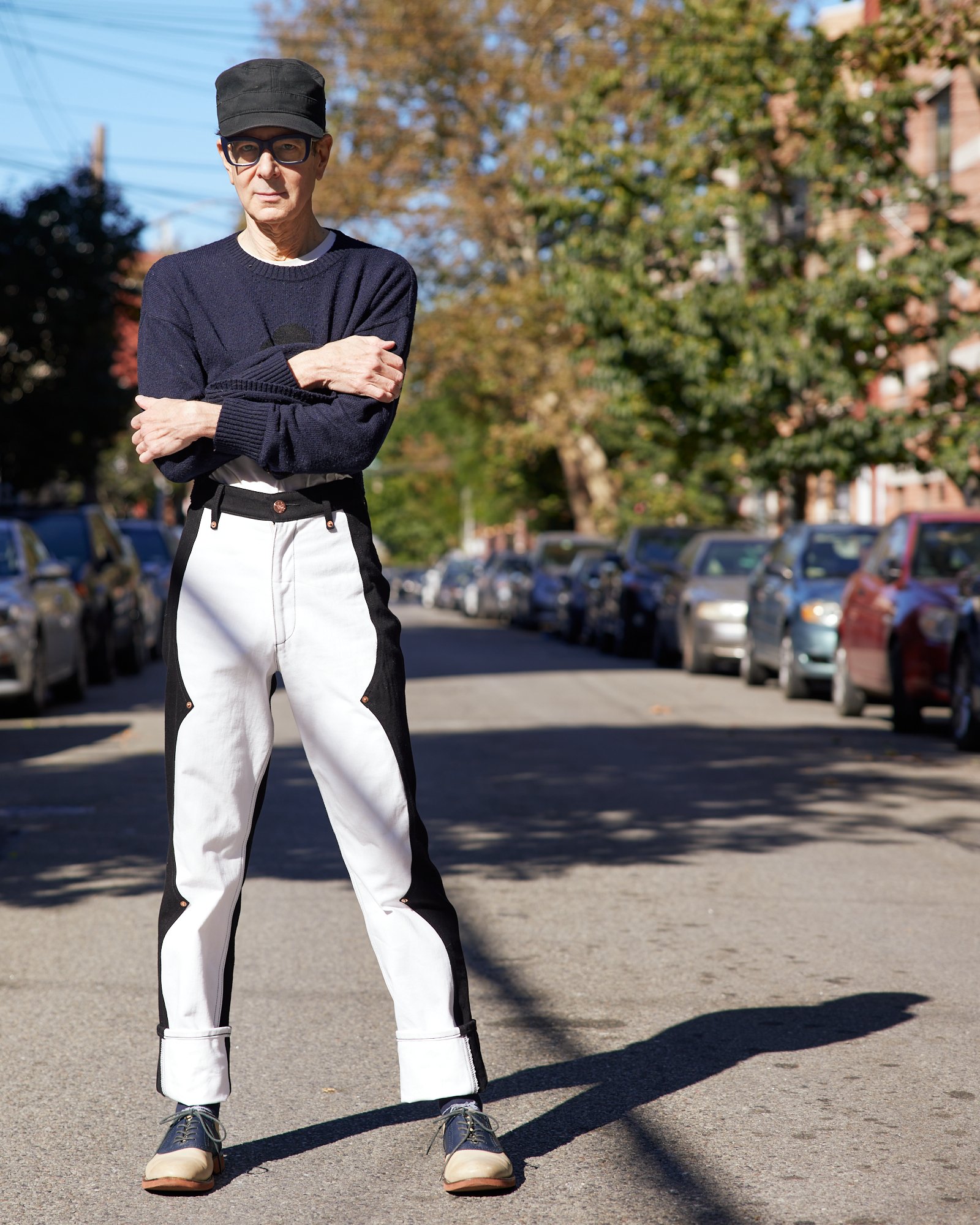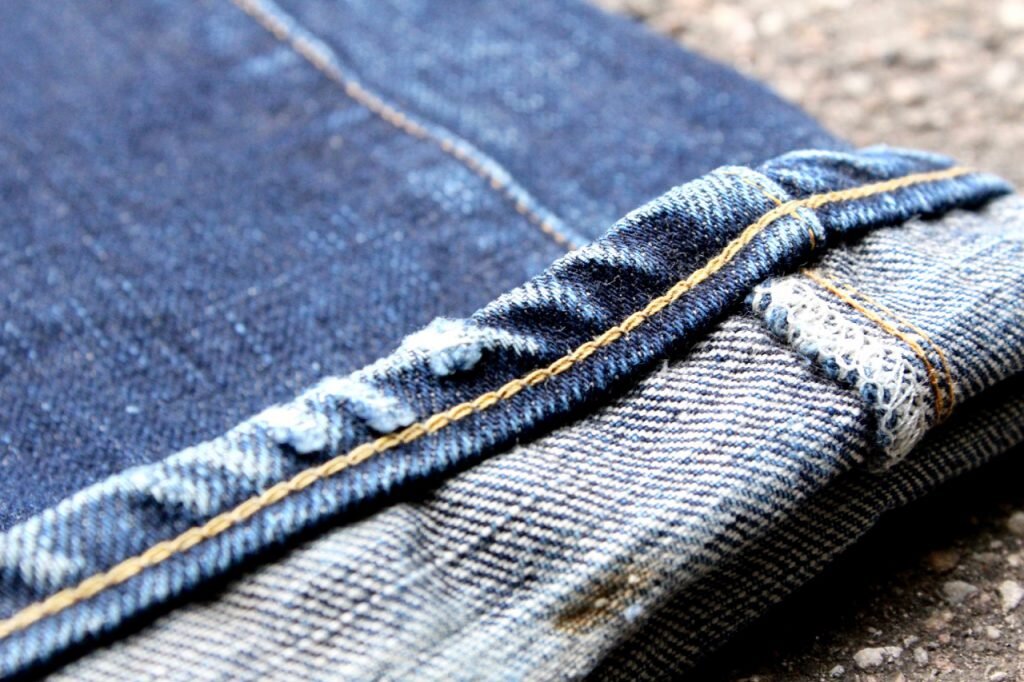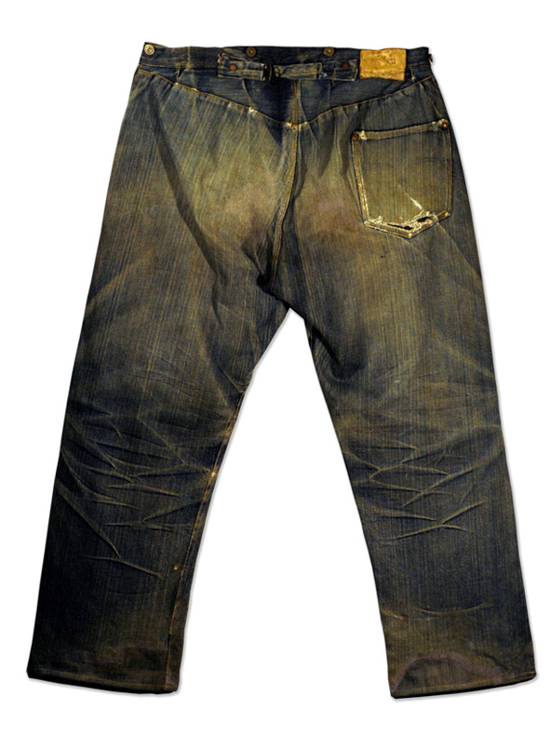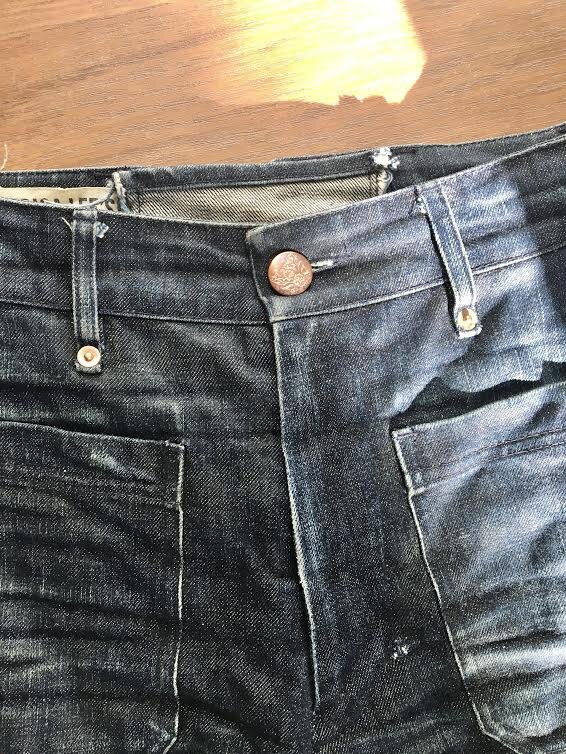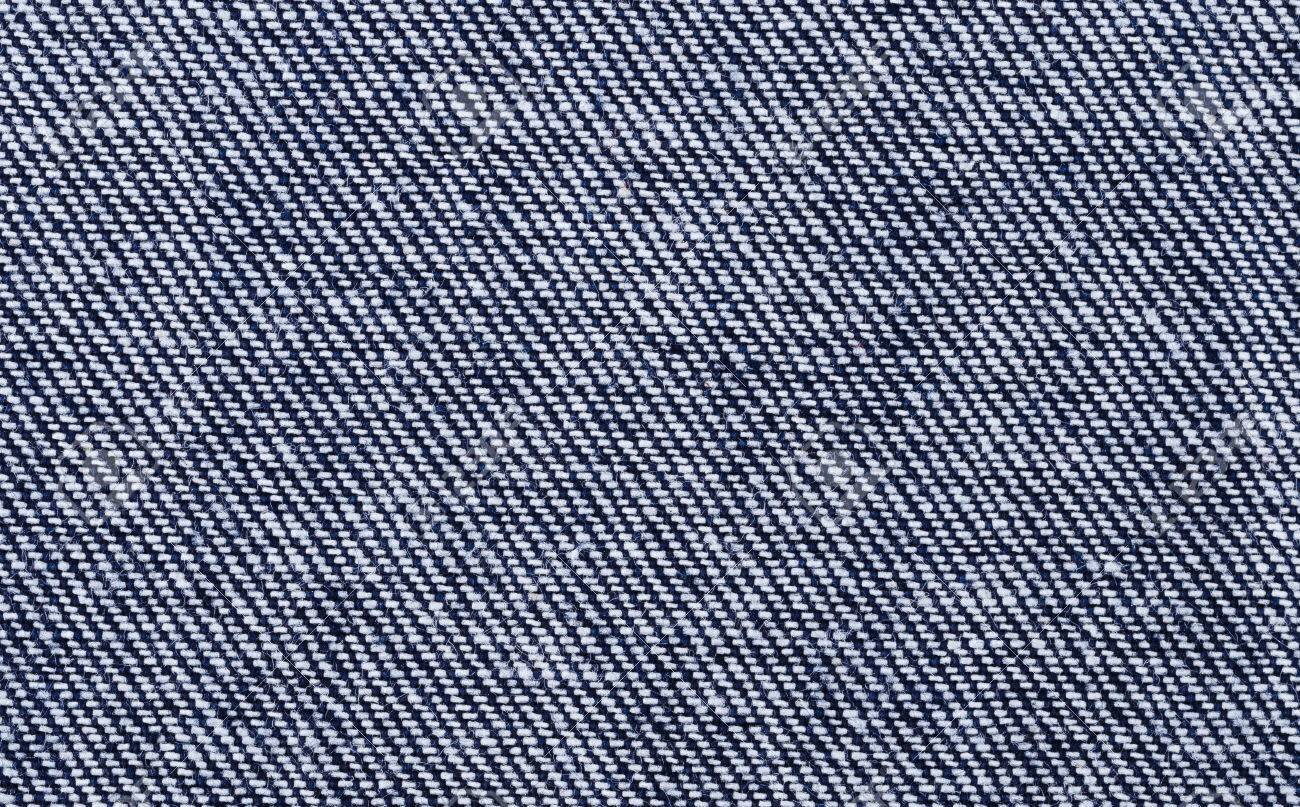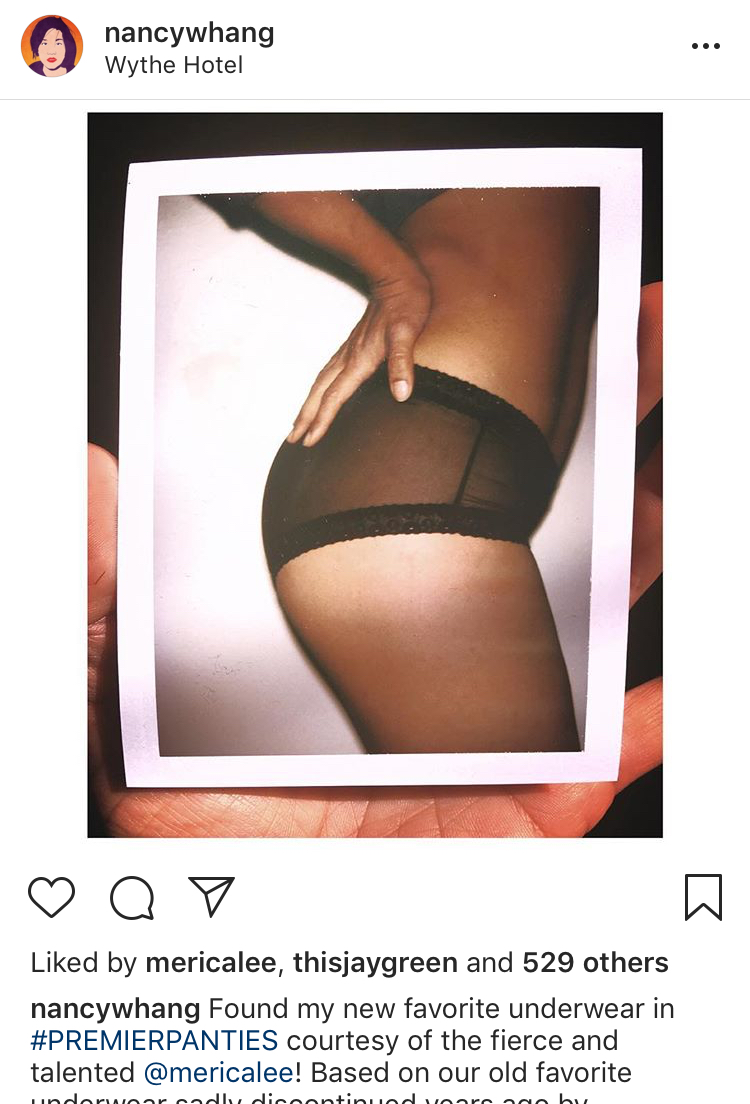On a beautiful day in August I got to spend almost an entire day asking Brooklyn based artist Amanda Browder, who does gigantic fabric installations, all the questions! We talked about art, the connection between fashion and climate change, fabric, sewing and feminism. Here’s a segment of our conversation where Amanda talks a little bit about how she got started and the wonderful connection between her work and the communities they are installed in!
Merica Lee: Helloooooo! For my blog readers, will you describe what you do?
Amanda Browder: Ooh yes. My name's Amanda Browder, I call myself a large scale fabric installation artist. What I do is work with communities to essentially come together to make large-scale fabric installation. The first step is to ask for fabric donations from people in the city. Second step, we sew them together during these public sewing days where everyone's welcome to come, tell stories, hang out, participate. And then the final part is the installation of the large scale fabric piece on the outsides of buildings in the same town where all the fabric came from. Each work that I've made in the past is site-specific to that town, that time and the people that lived there, which is really cool.
Amanda Browder Happy Coincidences (2022) Brugge, Belgium + Triennale Brugge : photo by Jasper van het Groenewoud
Merica Lee: How long does it take for projects, start to finish?
Amanda Browder: It depends on the size of the piece. The first piece that I did was where I live in Greenpoint, Brooklyn when I first moved here in 2010. It took a year to actually make it.
Merica Lee: Oh shit.
Amanda Browder: It was up for only three days, just FYI. These are temporary public art sculptures.
Merica Lee: Tell me about your first large scale fabric piece you ever did.
Amanda Browder: So, my first piece was originally in Chicago, Illinois, where I was living. I was just out of grad school. I was teaching at the Art Institute of Chicago in the fibers department. I felt really good as an artist and I was making all these soft sculptures, usually out of fabric. I've been working in fabric my whole life. At that time, painting was just like God, and I was seen as like an Etsy craft artist, as a female artist who was sewing. So I was put in that camp immediately even though I had gotten my MFA, I was teaching doing everything that artists do. I was showing at White Columns, like I had shows, and somehow still, people were not really seeing me as the sculptor or installation artist. They were calling me out as … "Oh, you make quilts, oh you make blankets or, oh, can you sell me that pillow?" I'm like, "That's a sculpture, not a pillow!"
That frustration led me to sewing all the fabric I collected over five years in my apartment and calling my friends and saying, "Hey, I'm doing this large scale fabric installation, come to my apartment." I draped it outside my window, and it was three stories tall, and it's this huge piece called Rapunzel.
Amanda Browder Rapunzel (2006) Chicago, IL
Amanda Browder: The idea was to kind of shift people's understanding of the landscape, the urban landscape in the neighborhood. So many times when you go to see art with a capital A, you go to museums or galleries, it's kind of sequestered to that location.
Now, obviously public art is something we see in the outdoors. But at that time, really plop art was the majority of what we saw as public art, big metal sculptures.
What if I make these works so big, that I change the environment, will you finally see it as Installation or call it public art? So I started using buildings and outdoor space as a way to take people out of that feeling that art needed to be sequestered to a museum or gallery, and rather it was for everybody.
Merica Lee: Amazing! Tell me about the piece you did right here in Brooklyn.
Amanda Browder: Ok so the first piece I did when I arrived in Greenpoint in 2010 was called Future Phenomenon on Eagle and Manhattan. I wanted to introduce myself to the neighborhood in a way that was attempting to subvert the gentrification system of artists moving to a neighborhood and being judged as the developers who changed the neighborhood. So when I moved here, I was thinking, how can I do a project that introduces my practice? At the same time get to know the city council people, the neighbors, everybody in my neighborhood, and they'll know it's a celebration, not a taking over.
Back then it was before smartphones. I would go to art openings, I moved to New York cold, with really few friends, no connections and so this was another way for me to get to know people. And I just started handing out postcards, being like, "Oh, I'm going to do this piece." No funding. No support. No idea how I was going to do it.
Merica Lee: Oh, that's so punk rock.
Amanda Browder: Hahahhahahah thanks :) Maybe a DIY hustle
Amanda Browder Future Phenomena (2010) Greenpoint, Brooklyn, NY + North Brooklyn Public Art Coalition
Amanda Browder: Anyway, it took about three years of just handing stuff out and getting to know people. And then this group called the North Brooklyn Public Art Coalition were interested in sponsoring my project. , which was awesome. We got a Brooklyn Arts Council grant. We got written up in the Daily News. They were really supportive as a group.
Amanda Browder: To start we had, I think, four different public sewing days around the Greenpoint, Bushwick, Williamsburg area in the convent at Saint Cecilia’s. During these public sewing days we were able to get donations of fabric from people in the neighborhood. I got to know people, we could chat over fabric, and get excited over sewing.
Amanda Browder: It was a great introduction to getting to know my neighborhood. I've lived here about 15 years and yeah, I still see some of those people on the street!
Merica Lee: So so cool that you are working and sewing with the communities where the pieces will be shown. And also the added layer of the donated fabrics!
Amanda Browder: There are so many stories that go with the fabric donations too. It is an opportunity for people to either get rid of stuff that has been sitting for a while, or to release some important fabric that has meaning but is too difficult to donate or cut up. I like to provide a space for people to donate fabric in homage to a story or loved one.
I appreciate that, I honor all that fabric that comes in. I document as many stories as I can when they come in that information, all conceptually gets embedded into the work. I've tried over the years to archive all the stories, it's sometimes very difficult. I create sewing books with names, drawings and stories that attempt to document the daily moments of the Public Sewing Days and the stories behind the fabric donations.
Amanda Browder: You know, people love to tell stories when you're sitting over a table working together, and so the Public Sewing Days Are amazing, because people come and share while we are pinning together. Very similar to a sewing circle it brings strangers to a common space to get to know each other.
And then friendships happen, like long standing friendships. I did a great project in Birmingham, Alabama “Magic Chromacity” . I am still chatting with the people in Birmingham, and that was 2014. I miss working with those amazing volunteers! We bonded and created new friendships over the sewing table.
Amanda Browder: And so yeah, the Birmingham project was definitely one of the first times where I was connecting with the quilting community, with a capital Q. It was Bib and Tucker Sewing co-op, they're an amazing group that teaches people in the community how to sew. They've been making quilts forever. It's just such an awesome group. But it's harnessing that history from that area and supporting women... I mean, men sew don't get me wrong. We hear the word tailor and we think men.
Amanda Browder Magic Chromacity (2014) Birmingham, AL + AIEIVA and Alys Stephens Center - photo by Jared Ragland
Merica Lee: Yeah, interesting.
Amanda Browder: And we say sewist, or well sewist is now the non-gendered word, which is great. Sewist.
Merica Lee: Sewist. I've never heard that before.
Amanda Browder: Me neither. And I'm super excited. I'm using it all the time now.
Merica Lee: Yeah. I'm going to start using it too.
Merica Lee: And what is the size yardage wise, roughly, of the pieces?
Amanda Browder: We're construction, so it's more feet.
Merica Lee: Okay. Well that works too, yeah.
Amanda Browder: The first piece that really put me on the map was with the Albright Knox museum up in Buffalo. We covered three buildings. One building was 250 feet by 35 feet. Then the second one was the church and that was about 70 to 80 feet tall and about 150 feet wide. And then the third one was the smallest building and I'm guessing like 60 feet by 30 feet.
Amanda Browder Spectral Locus (2018) Buffalo, NY + Albright Knox Museum + AK Public Art
Amanda Browder: The one in Grand Rapids was the largest piece I've ever done, and that was six buildings. We did four sky bridges, a huge building and another smaller building. But the huge building, when we stretched it out, was too big to lay out flat in three basketball courts. We had to do it in three sections. It was 150 by 150 square feet.
Amanda Browder Kaleidoscopic (2019) Grand Rapids, MI + Art Prize: Project 1
Merica Lee: Yeah. That's a lot of fabric.
Amanda Browder: It's a lot of fabric. So it would be like sewing a 100 000 square feet of fabric.
Merica Lee: Wow.
Amanda Browder: And it's all zigzag stitch with a regular machine. There's nothing fancy.
Merica Lee: Oh my God. It's all so cool.






